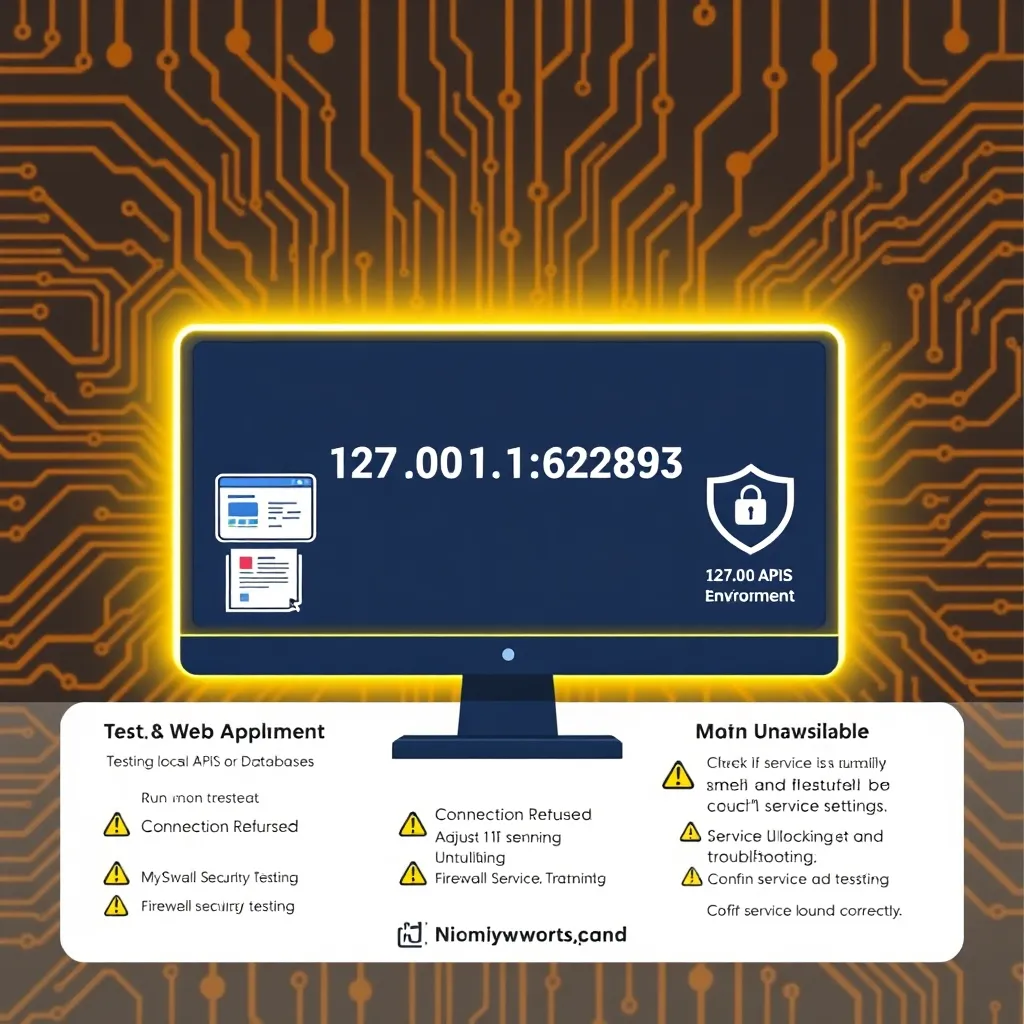In the domain of systems administration, improvement, and programming testing, 127.0.0.1:62893 is something other than an IP address and port number — it’s a passage to understanding localhost and how designers and IT experts make, test, and oversee frameworks without expecting to wander past their machines. The idea of 127.0.0.1, otherwise called localhost, is fundamental for anybody associated with programming, application improvement, or organization design.
This article separates all that you want to be aware of 127.0.0.1:62893, from its usefulness and significance to its not unexpected purposes in certifiable applications. By and by, you’ll not just comprehend the reason why this blend is basic to framework testing but also figure out how to involve it for a more successful turn of events.
What is 127.0.0.1?
127.0.0.1 is the loopback address, ordinarily known as localhost. It’s a saved IP address used to guide traffic back to your PC. When you send information to 127.0.0.1, your machine gets it promptly without going through an outside organization. This is pivotal for testing network administrations, like web servers or applications, on your nearby gadget before disclosing them or conveying them to outside clients.
Consider 127.0.0.1 as an inner easy route for your framework, a way to “converse with itself” for debugging, testing, or running administrations with practically no need to impart beyond the neighborhood machine.
What is Port 62893?
A port is a virtual place where network associations start and end. Port 62893 is one of the thousands of accessible ports on your PC, frequently powerfully doled out by the framework to route data to a particular help. When you join 127.0.0.1 with a port like 62893, you make a pathway where information shipped off the loopback address will be handled by anything administration or application tuning in on that particular port.
For this situation, 127.0.0.1:62893 alludes to a help or program running on your nearby machine, open just from that gadget. If, for instance, you’re running a local web server or a database, you can design it to tune in on 127.0.0.1 and port 62893, permitting you to test or troubleshoot it straightforwardly on your machine.

For what reason is 127.0.0.1:62893 Significant?
Understanding and utilizing 127.0.0.1:62893 is basic for designers and framework directors. Here are a few justifications for why:
1. Safe Testing Environment
- Nearby Testing: While you’re fostering a site or an application, utilizing localhost assists you with testing your code on your machine before sending it to the web. This implies you can catch and fix bugs, upgrade execution, and guarantee security all inside your nearby climate.
- Decreased Risks: Since 127.0.0.1 is held inside your framework, no outer organization is involved. This restricts the openness of delicate information and limits security gambles, which are significant in the beginning phases of improvement.
2. Faster Troubleshooting and Feedback
- Moment Feedback: When you use localhost for testing, you benefit from practically moment input since the organization traffic never leaves your machine. This assists developers with rapidly distinguishing mistakes, execution issues, or bugs.
- Disconnected Testing: By guiding solicitations to 127.0.0.1:62893, you can establish a segregated climate, liberated from outside impacts. For example, web postponements or outer server issues. This helps maintain the emphasis exclusively on your code or administration.
3. Running Neighborhood Services
- Information bases and APIs: Engineers frequently run data sets like MySQL or Programming interface servers on 127.0.0.1. Relegating them to a particular port (like 62893) permits numerous administrations to run at the same time, each tuning in on its extraordinary port. This is fundamental while creating multi-administration applications, like those requiring both a web server and a data set.
- Localhost Web Development: Many web engineers run servers on 127.0.0.1:62893 to reproduce how their application or site will function once conveyed. This gives a live climate without expecting to distribute the webpage online rashly.
4. System Execution Monitoring
- Network Arrangement Testing: Organization heads use localhost to check framework execution and analyze potential organization issues. Assuming you’re trying firewall setups, for example, 127.0.0.1 confirms that the framework administrations are answering accurately.
5. Security and Firewall Configurations
- Impeding Undesirable Traffic: One of the critical benefits of 127.0.0.1 is that it just permits correspondence inside the nearby framework. This implies outer assailants can’t get to administrations bound to 127.0.0.1. Designers and framework chairmen frequently utilize this arrangement to get delicate administrations. Such as interior information bases or administrator interfaces, from outside dangers.

The most effective method to Utilize 127.0.0.1:62893 Practically speaking
To capitalize on 127.0.0.1:62893, you can apply it in different certifiable situations:
1. Testing Web Applications
- Run a neighborhood improvement climate (like Node.js or Apache) and direct your program to 127.0.0.1:62893 to perceive how your site acts before it goes live.
2. Running Nearby APIs or Databases
- Send off a data set like MySQL or PostgreSQL on 127.0.0.1 utilizing a particular port (like 62893) and interface your application to it for smooth testing.
3. Firewall and Security Testing
- Relegate specific administrations to 127.0.0.1 and block outside admittance to those ports to keep undesirable clients from getting to your inner frameworks.
Normal Issues and Investigating
While utilizing 127.0.0.1:62893 is for the most part clear, you might experience a few normal issues:
- Association Declined Error: This frequently happens when the help appointed to port 62893 isn’t running or is erroneously designed. Guarantee that your application or server is dynamic and tuning in on the predetermined port.
- Firewall Blocking: Look at your firewall settings to guarantee that traffic to 127.0.0.1 is permitted, particularly assuming you’re trying security rules.
- Administration Unavailable: If you can’t get to a web server running on 127.0.0.1:62893, confirm that the right help is bound to the loopback address and the right port.
Conclusion
Whether you’re a product engineer, network chairman, or IT proficient, utilizing 127.0.0.1:62893 gives a solid, effective, and secluded climate for testing and running neighborhood administrations. By understanding how to use localhost and explicit ports. You can foster powerful applications, tweak execution, and guarantee security — all without expecting to leave the protected limits of your framework.
FAQ
Q1: Might I at any point get to 127.0.0.1:62893 from another gadget?
No, 127.0.0.1 is limited to your neighborhood machine. It’s a unique IP address that main courses traffic inside a similar gadget.
Q2: How would I check if a port (like 62893) is being used?
On Windows, you can utilize ‘netstat – a | find “62893”‘ in the order brief to check assuming that the port is being utilized. On Linux, have a go at utilizing ‘lsof – I:62893’ to get comparative data.
Q3: What’s the contrast between 127.0.0.1 and your PC’s IP address?
127.0.0.1 is the loopback address, meaning steering traffic inside your device is utilized. Your PC’s genuine IP address (e.g., 192.168.1.5) is utilized for correspondence with outside gadgets over an organization.
Source of Inspiration
Are you prepared to improve your turn-of-events or organization testing processes? Begin trying different things with 127.0.0.1:62893 today! Whether you’re investigating network issues, running a nearby web server, or testing database designs. The force of localhost is readily available. Jump further into your undertakings by opening the maximum capacity of this fundamental instrument.
Following this aide will give you a strong handle on the numerous ways 127.0.0.1:62893 can help your work process. Whether you’re a fledgling or an accomplished engineer, dominating this idea is essential for effective and secure testing in the computerized world.











